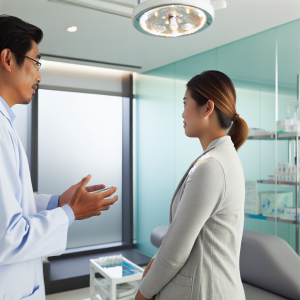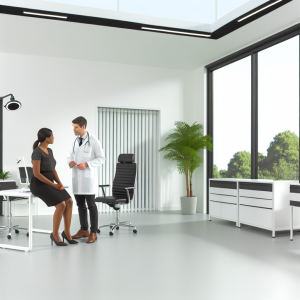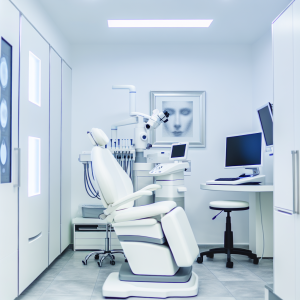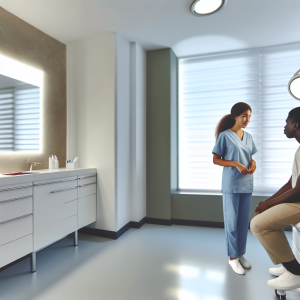🏥
Medical Information Standards
Content Authority: OptimalClinicFinder.com is a comprehensive medical directory platform connecting patients with qualified CoolSculpting providers. Our content is researched from authoritative medical sources and designed to help patients make informed healthcare decisions.
How CoolSculpting Arms Works: Clinical Mechanism and Technology
CoolSculpting arms treatment utilizes cryolipolysis, a scientifically-proven process that selectively targets fat cells through controlled cooling. The technology is based on the principle that fat cells are more vulnerable to cold temperatures than surrounding tissues. When exposed to precise cooling (typically between -11°C to -5°C), fat cells undergo apoptosis – a natural cell death process – while skin, muscle, and nerves remain unharmed.
The CoolSculpting system employs specialized applicators designed specifically for arm contours. The CoolMini and CoolAdvantage applicators are most commonly used for arm treatments, featuring vacuum suction that draws tissue into the cooling chamber and temperature sensors that maintain optimal cooling throughout the procedure. This precise control ensures maximum fat cell elimination while maintaining patient safety and comfort.
💡
Did You Know?
Clinical studies show that CoolSculpting patients achieve excellent results when combined with professional-grade aftercare products.
Clinical Research and Evidence Base for Arms Treatment
Multiple peer-reviewed studies have documented the effectiveness of CoolSculpting for arm fat reduction. A landmark study published in Clinical, Cosmetic and Investigational Dermatology followed 60 patients receiving arm CoolSculpting treatments over 16 weeks. Results showed an average fat layer reduction of 22.4% measured by ultrasound, with 95% of patients reporting satisfaction with their results.
Independent photography assessments by blinded reviewers confirmed visible improvement in 89% of treated patients. Ultrasound measurements demonstrated that fat layer thickness continued to decrease for up to 4 months post-treatment, indicating the ongoing elimination of crystallized fat cells through the body’s natural metabolic processes. Long-term follow-up studies extending to 9 years have confirmed the permanence of fat cell elimination, with no regeneration of treated fat cells observed.
CoolSculpting Arms Treatment Protocols and Procedure
Successful CoolSculpting arms treatment begins with comprehensive consultation and treatment planning. During the initial evaluation, providers assess arm anatomy, pinch fat thickness, skin quality, and patient goals to determine candidacy and develop customized treatment plans. Ideal candidates have at least one inch of pinchable fat in the treatment area and realistic expectations about results.
The treatment protocol involves marking the treatment areas, applying protective gel pads to prevent skin damage, and positioning the CoolSculpting applicator over the targeted fat. Each arm typically requires 35-60 minutes of treatment time, depending on the applicator used and treatment area size. Patients experience initial cold sensation followed by numbness as the area becomes anesthetized by the cooling process. Most patients read, work on laptops, or relax during the procedure.
💡
Quick Tip
CoolSculpting works best when combined with healthy lifestyle choices for optimal results.
Safety Profile and Risk Management for Arms
CoolSculpting arms treatments have an excellent safety profile when performed by qualified providers using FDA-cleared equipment. Common side effects include temporary redness, swelling, bruising, and numbness in the treatment area, typically resolving within 2-4 weeks. Some patients experience mild tingling or tenderness as sensation returns to the treated area.
Rare but serious complications include paradoxical adipose hyperplasia (PAH), occurring in approximately 0.0051% of treatments. PAH involves an increase rather than decrease in fat cells in the treated area, more commonly affecting male patients and abdominal treatments than arms. Other rare complications include late-onset pain, prolonged numbness, or skin contour irregularities. Proper patient selection, technique, and post-treatment care minimize these risks.
Cost Analysis and Financing Options for Arms Treatment
CoolSculpting arms costs vary significantly based on geographic location, provider expertise, facility overhead, and treatment complexity. Most patients require treatment of both arms, effectively doubling the per-arm cost. Additional factors affecting pricing include the number of applicators needed, whether multiple sessions are required, and any package deals offered by providers.
Since CoolSculpting is considered a cosmetic procedure, health insurance typically doesn’t provide coverage. However, many providers offer financing options through companies like CareCredit, Alphaeon Credit, or in-house payment plans. Some medical practices provide package pricing for multiple treatment areas or seasonal promotions that can reduce overall costs. Patients should factor in the total cost of achieving their desired results, which may require multiple sessions.
Provider Selection and Facility Credentials
Choosing a qualified provider is crucial for optimal CoolSculpting arms results and safety. Patients should seek board-certified dermatologists, plastic surgeons, or other physicians with specific CoolSculpting training and certification. The provider should have extensive experience with body contouring procedures and a thorough understanding of arm anatomy and aesthetic proportions.
✓
Why Choose CoolSculpting?
●
Clinically proven
●
FDA approved
●
Minimal downtime
●
Long-lasting
Certified CoolSculpting providers complete comprehensive training programs covering treatment protocols, patient selection, safety procedures, and complication management. Facilities should maintain current certification, use only FDA-cleared CoolSculpting equipment, and follow strict safety protocols. Patients should verify provider credentials, review before-and-after photos of actual arm patients, and ensure the facility maintains appropriate medical standards and emergency protocols.
Maximizing CoolSculpting Arms Results
Optimal outcomes from CoolSculpting arms treatments require patient cooperation in maintaining stable weight and following post-treatment recommendations. While the procedure permanently eliminates treated fat cells, remaining fat cells can still expand with weight gain. Patients achieve best results by maintaining healthy lifestyle habits including regular exercise and balanced nutrition.
Post-treatment massage immediately following the procedure helps break up crystallized fat tissue and may enhance results. Some providers recommend lymphatic drainage massage or professional massage therapy in the weeks following treatment to optimize lymphatic clearance of destroyed fat cells. Staying well-hydrated and maintaining light physical activity can also support the body’s natural elimination of fat cell debris.
Realistic Expectations and Timeline
Understanding the CoolSculpting timeline helps patients set realistic expectations and remain satisfied with their treatment journey. Initial results may become visible as early as 3 weeks post-treatment, but most patients notice significant changes at 2-3 months when the body has processed the majority of eliminated fat cells. Final results typically appear at 4 months, though some patients continue seeing subtle improvements for up to 6 months.
CoolSculpting produces gradual, natural-looking results rather than dramatic immediate changes. Patients typically achieve 20-25% fat reduction in treated areas per session, which translates to visible but subtle contouring improvement. Those seeking more dramatic results may require additional treatment sessions spaced 2-3 months apart. The gradual nature of results helps ensure natural-looking outcomes that complement the patient’s overall physique.
📚 Medical Authorities & Professional Standards
All CoolSculpting procedures should be performed by licensed medical professionals following established clinical guidelines and safety protocols.
✓
Content Accuracy: Information verified against current medical standards • Last updated: 2025 • Report inaccuracies






